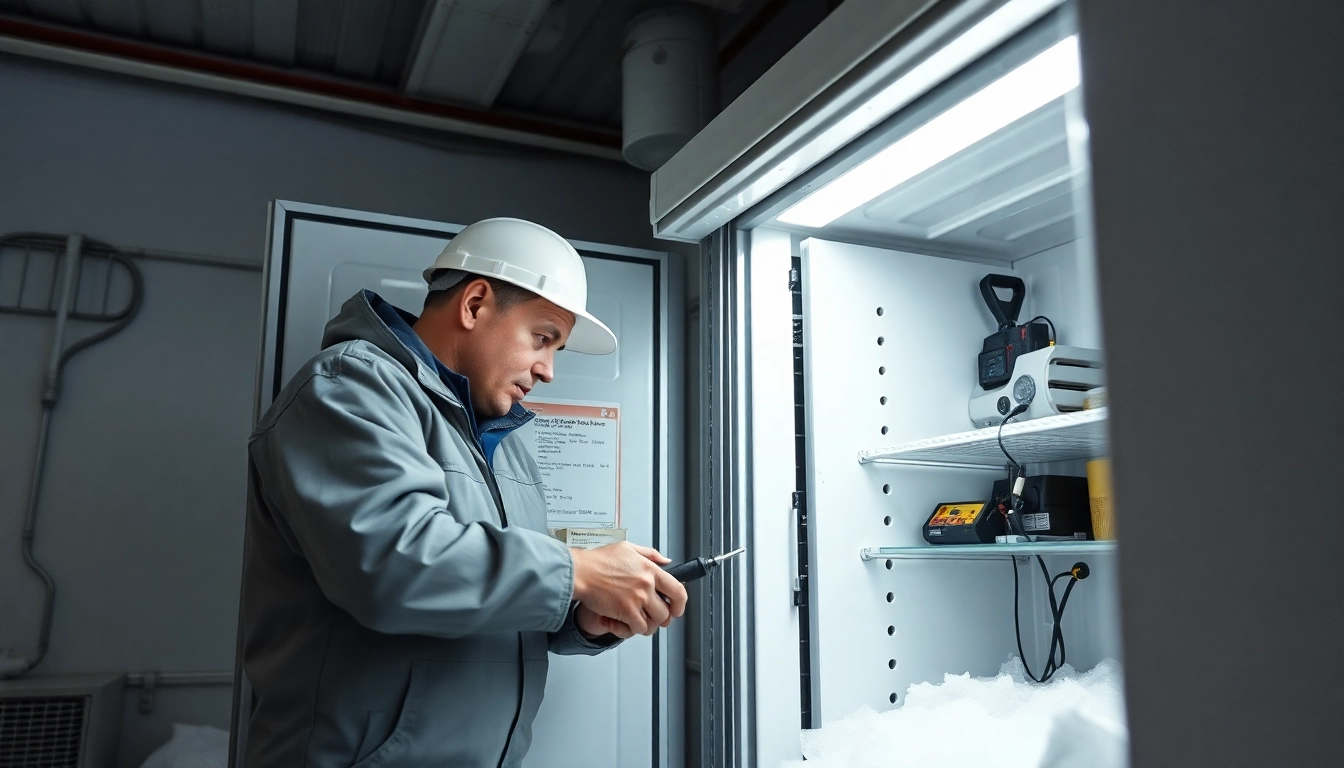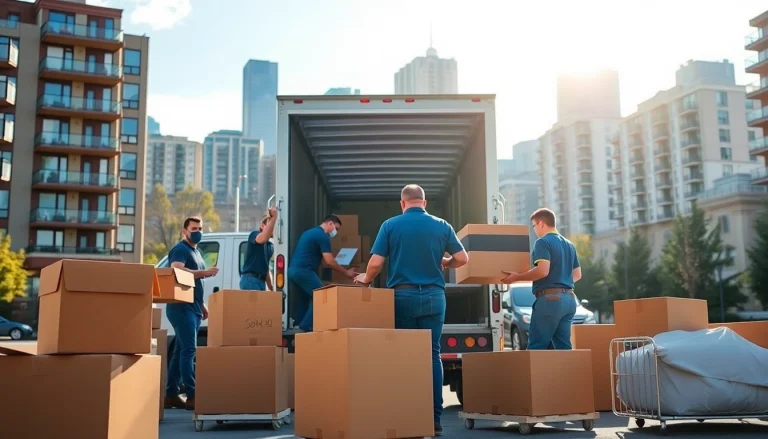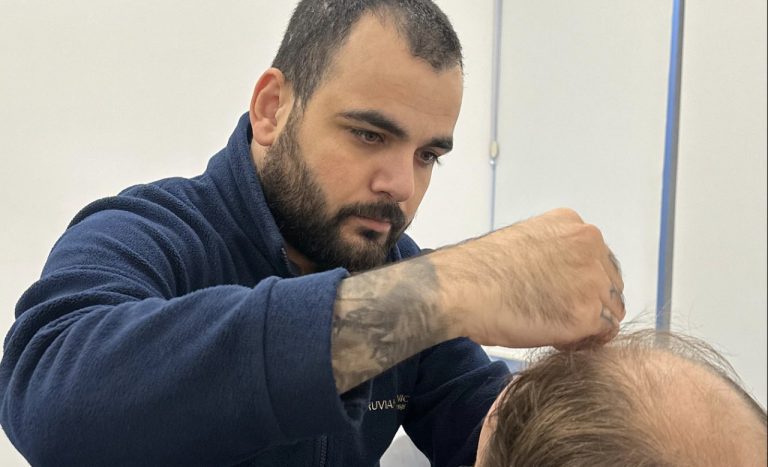
Understanding Walk In Freezer Systems
What is a Walk In Freezer?
A walk-in freezer is essentially a large refrigeration unit designed for the storage of perishable goods at sub-zero temperatures. These freezers are often employed by restaurants, grocery stores, and food processing facilities to maintain inventory freshness and compliance with health regulations. Walk-in freezers provide an efficient storage solution for items that require extreme cold, setting them apart from standard kitchen freezers.
Key Components of Walk In Freezers
Understanding the primary components of a walk-in freezer ensures effective operation and maintenance. Key elements include:
- Refrigeration Unit: This is the central component that cools air to the desired temperature.
- Insulation: High-quality insulation minimizes airflow, maintaining the cold temperature and enhancing energy efficiency.
- Evaporator Coils: These coils absorb heat from the interior, helping to lower the temperature.
- Condenser Coils: Located outside, these coils expel heat absorbed from the evaporator coils, contributing to the cooling process.
- Thermostat: This device regulates the temperature by controlling the refrigeration cycle.
- Doors and Gaskets: Proper sealing prevents air leaks, ensuring the efficiency of the freezer.
Common Issues and Their Causes
Regular use of walk-in freezers can lead to a variety of issues. Understanding these problems can help in early diagnosis and prompt action. Common issues include:
- Temperature Fluctuations: This can be caused by malfunctioning thermostats, dirty evaporator or condenser coils, or faulty door seals.
- Excessive Frost Buildup: Poor air circulation or faulty defrost systems can lead to frost accumulating, which impairs the efficiency of the unit.
- Unusual Noises: Grinding, buzzing, or hissing sounds may indicate mechanical issues with the compressor or fan.
Signs Your Walk In Freezer Needs Repair
Temperature Discrepancies
One of the first signs of a malfunctioning walk-in freezer is temperature discrepancies. If the internal temperature varies significantly from the set point or fluctuates frequently, it’s crucial to investigate the system. Regular monitoring of temperatures can not only assist in maintaining quality control but also help identify potential issues early.
Unusual Noises or Smells
Another indicator of problems includes unusual noises, like clicking or clanking, which can signify mechanical failures. Similarly, bad odors could suggest organic material has been trapped in the unit, or worse, could indicate a coolant leak. Prompt attention to these signs is essential for preventing more extensive damage.
Inefficient Energy Usage
A sudden spike in energy bills can indicate inefficiencies in your walk-in freezer. If the unit works harder to maintain temperature due to leaks, dirty coils, or mechanical issues, it will draw more power. Regular energy audits can help detect problems before they escalate.
Steps for Effective Walk In Freezer Repair
Initial Diagnostic Steps
Diagnosing issues with a walk-in freezer requires a systematic approach:
- Check the Thermostat: Ensure it’s set correctly and functioning.
- Inspect Doors and Seals: Look for gaps and check for the integrity of gaskets.
- Examine the Refrigeration Cycle: Ensure the compressor, evaporator, and condenser are operating correctly.
- Monitor for Uneven Cooling: Identify specific areas within the freezer that may not be cooling appropriately.
Common Fixes for Common Problems
Addressing problems often requires different strategies based on the issue identified:
- Refrigerant Levels: Low refrigerant levels should be refilled by a certified technician.
- Cleaning Coils: Cleaning dusty condenser and evaporator coils can improve efficiency drastically.
- Replacing Gaskets: Worn-out door gaskets should be replaced to minimize cold air loss.
Tools Needed for Repair
Effective repair often requires specific tools and equipment, including:
- Multimeter for electrical diagnostics
- Replacement parts for common failures (like gaskets and thermostat)
- Basic hand tools (screwdrivers, wrenches)
- Cleaning supplies (for coils and interior surfaces)
Preventive Maintenance for Walk In Freezers
Regular Cleaning and Inspections
Routine cleaning of the interior and exterior, along with regular inspections, greatly extends the lifespan of your walk-in freezer. Clean evaporator and condenser coils can prevent overheating and help maintain optimal efficiency. It’s advisable to implement a seasonal or quarterly cleaning schedule.
Importance of Proper Thermostat Settings
Maintaining the correct thermostat settings is critical for energy efficiency. Setting the temperature too low can lead to unnecessary energy consumption and excessive frost buildup, while setting it too high can compromise food quality. Ideal temperatures for walk-in freezers typically range between -10°F to -20°F.
Long-term Upkeep Tips
Long-term maintenance strategies include:
- Regularly monitor the energy usage and keep logs to identify abnormal trends.
- Scheduling professional maintenance at least once a year.
- Creating a checklist of common issues to check for during inspections.
Choosing the Right Professional for Walk In Freezer Repair
What to Look For in a Technician
Choosing the right technician can make all the difference: look for credentialed technicians who have experience specifically with commercial refrigeration systems. Verified reviews and references play a critical role in evaluating potential hires, particularly for specialized repairs.
Questions to Ask Before Hiring
Before committing to a service, consider asking the following questions:
- What is your experience with walk-in freezer repairs?
- Do you offer guarantees on your work?
- Can you provide references from previous clients?
- What are your response times for emergency repairs?
Cost Considerations for Professional Repairs
The cost of hiring a professional varies significantly, depending on the extent of the damage and the specific parts needed. Repair costs can range from as little as $90 for minor fixes to more than $650 for complex repairs, such as compressor replacement. It’s prudent to obtain multiple quotes to ensure you’re making an informed decision.
In summary, understanding and maintaining a walk-in freezer is crucial for any commercial establishment that relies on it for food storage. By recognizing common issues, utilizing effective diagnostic strategies, performing regular maintenance, and hiring qualified professionals, you can ensure the longevity and efficiency of your walk-in freezer. For those looking to explore more about walk in freezer repair, take the time to assess your needs and act proactively in maintaining your refrigeration systems.






